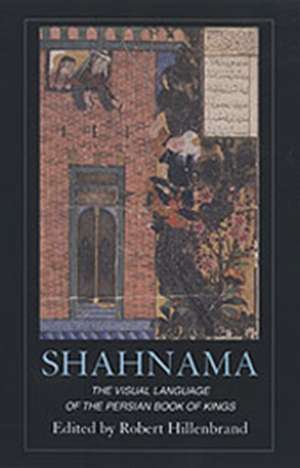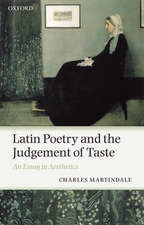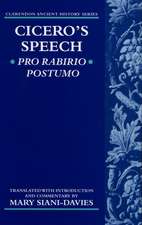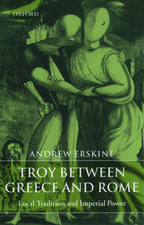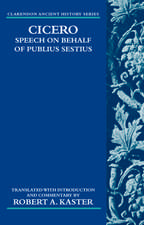Shahnama: The Visual Language of the Persian Book of Kings: Visual Arts Research Institute Edinburgh
Editat de Robert Hillenbranden Limba Engleză Hardback – 24 aug 2004
Preț: 743.70 lei
Preț vechi: 994.02 lei
-25% Nou
Puncte Express: 1116
Preț estimativ în valută:
142.30€ • 148.58$ • 117.78£
142.30€ • 148.58$ • 117.78£
Carte tipărită la comandă
Livrare economică 04-18 aprilie
Preluare comenzi: 021 569.72.76
Specificații
ISBN-13: 9780754633679
ISBN-10: 0754633675
Pagini: 200
Dimensiuni: 176 x 250 x 19 mm
Greutate: 0.86 kg
Ediția:1
Editura: Taylor & Francis
Colecția Routledge
Seria Visual Arts Research Institute Edinburgh
Locul publicării:Oxford, United Kingdom
ISBN-10: 0754633675
Pagini: 200
Dimensiuni: 176 x 250 x 19 mm
Greutate: 0.86 kg
Ediția:1
Editura: Taylor & Francis
Colecția Routledge
Seria Visual Arts Research Institute Edinburgh
Locul publicării:Oxford, United Kingdom
Cuprins
Contents: Preface; Foreword, Richard Thomson; New perspectives in Shahnama iconography, Robert Hillenbrand; Shahnama as text and Shahnama as image: a brief overview of recent sudies, 1975-2000, Marianna Shreve Simpson; The great Mongol Shahnama in the Quajar period, Jonathan M. Bloom; Rewriting the history of the great Mongol Shahnama, Sheila S. Blair; The St. Petersburg illustrated Shahnama of 733 Hijra (1333AD) and the Injuid school of painting, Adel' T. Adamova; Firdausi and more: a Timurid anthology of epic tales, Elaine Wright; The Kevorkian-Kraus-Khalili Shahnama. The history, codicology and illustrations of a 16th-century Shirazi manuscript, Tim Stanley; Characters out of context: the case of a bowl in the Victoria and Albert Museum, Sylvia Auld; Bahram Gur woven with gold: a silk fragment in the diocesan museum of St. Afra in Augsburg and the modes of rendition of a popular theme, Avinoam Shalem; Faint echoes of past splendour - a group of brass plaques from 19th-century Qajar Iran, Ulrike al-Khamis and Godfrey Evans; Bandar-i Tahiri - a late outpost of the Shahnama, Jennifer M. Scarce; Evidence for grid layout in Persian manuscripts, M. Amin Mahdavi; Appendices; Index.
Recenzii
Best work in the field of Iranian Studies, World prize for the Book of the Year of the Islamic Republic of Iran
'... a beautifully illustrated work, containing a collection of solid articles by leading scholars in the field of Shahnama studies. The often revealing results of meticulous research into different aspects of Shahnama manuscripts and artefacts relating to the Shahnama presented in this volume emphasize the wide scope and firm position of the Shahnama in Persian art and literature through the ages.' Bibliotheca Orientalis
'A fine example of recent scholarship on a legendary monument of Islamicate art... It belongs to every Islamic studies library and every art history collection with global reach.' Religion and the Arts
'... a beautifully illustrated work, containing a collection of solid articles by leading scholars in the field of Shahnama studies. The often revealing results of meticulous research into different aspects of Shahnama manuscripts and artefacts relating to the Shahnama presented in this volume emphasize the wide scope and firm position of the Shahnama in Persian art and literature through the ages.' Bibliotheca Orientalis
'A fine example of recent scholarship on a legendary monument of Islamicate art... It belongs to every Islamic studies library and every art history collection with global reach.' Religion and the Arts
Descriere
Shahnama: The Visual Language of the Persian Book of Kings presents the first comprehensive examination of the interplay between text and image in the celebrated Persian national epic, the Shahnama, written by the poet Firdausi of Tus. The Shahnama is one of the longest poems ever composed and recounts the history of Iran from the dawn of time to the Muslim Arab conquests of the seventh century AD. There is no Persian text, in prose or poetry, which has been so frequently and lavishly illustrated. Offering fresh insights through a range of varied art-historical approaches to the Shahnama, the essays in this volume reveal how the subtle alterations in text and image serve to document changes in taste and style and can be understood as reflections of the changing role of the national epic in the imagination of Iranians and the equally changing messages - often political in nature - which the familiar stories were made to convey over the centuries.
